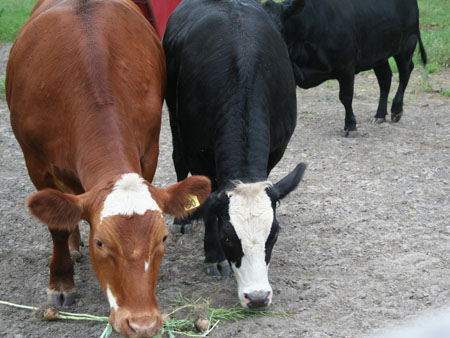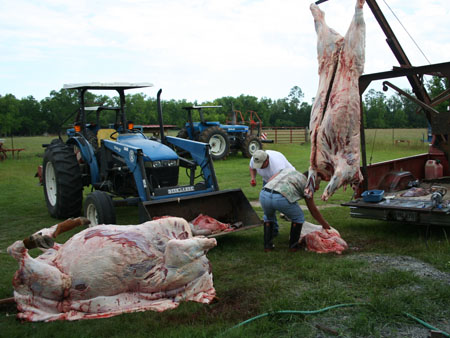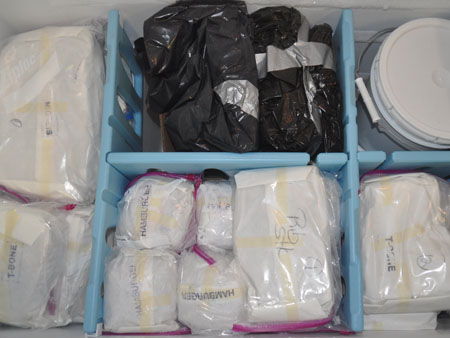

Local Beef I brought to our marriage nearly forty years ago the tradition of having meals centered around meat(s) three times a day. There was always ready-to-eat meat on the table or in the refrigerator, so snacks likewise were often meat-based (fried drumstick or sausage-and-biscuit, anyone?). In fact, a meal without meat failed to satisfy, and really was unthinkable. I did not know the concept of vegetarianism, but had I, it would have been filed under "Communism" or some similar term of the era. Even in the 70s and in the urbane setting of Washington University and Monsanto, we served a vegetarian meal at a dinner party and had raised eye brows. Indeed, having a breakfast without meat was a major experiment for me. Nedra, in mild contrast, had been accustomed to less meat consumption. Over the years, our meat consumption diminished and we were vegetarians for a period (still, our daughter has not eaten meat or poultry in 20 years and our son on his own has declined meat for several years). Our reasons for reducing meat consumption were multifaceted (the environmental cost, health benefits . . .), including particularly animal welfare. We have hit a balance at present by reducing consumption--often treating it merely as a condiment or flavoring--and avoiding factory meat to the extent we can (we limit our pork to that from Thompson Smokehouse directly or from the coop; and we buy Greenwise chicken from Publix, but would prefer a poulet-rouge-like poultry source). Obtaining beef had been problematic and we had limited ourselves to perhaps five pounds a year (generally from White Oaks or similar). Without undue hyperbole, I do not want to associate with beef produced in a factory setting. There are many www resources that go into detail, so I will let it go at that. My forestry consultant, Joe Matthews, is a cattleman. His cows have a leisurely life, do cow things together, and hang out under the old pecan trees at the Bob Akins Place, a Centenniel Family Farm. (The Akins place joins land owned by my grandfather L. G. Outlaw (also a Centenniel Family Farm) and land owned by my ggrandfather Samuel W. Watson (likewise a Centenniel Family Farm) and the latter two join our farm, also a Centenniel Family Farm). Thus, I have no objections when one of those well-cared-for and healthy cows walks up to a fence for an treat, and is killed.
|
|
 |
 |
| On Wednesday, May 4th, 2001, the butcher from Fender Smokehouse (Lakeland, GA--a few miles to the southeast) came to Joe's place and slaughtered 2 cows. The red one, which I split with two other people, had a live weight of 1032 lbs (upper left). As mentioned, the cow was not tramatized and died contentedly. The upper right shows dressing, with the offal in the loader being disposed on site (i.e., without concentrated waste). On a grass and corn diet, the meat had appropriate marbling (lower left) and was soon on its way for cool aging (lower right). | |
 |
The image at left is our end-point (processed, packed meat in the freezer), but is usually the beginning point for a typical beef consumer. |
Return to Documentation for this page. |
|